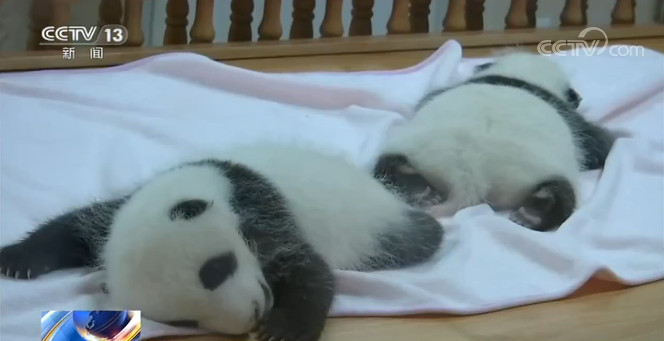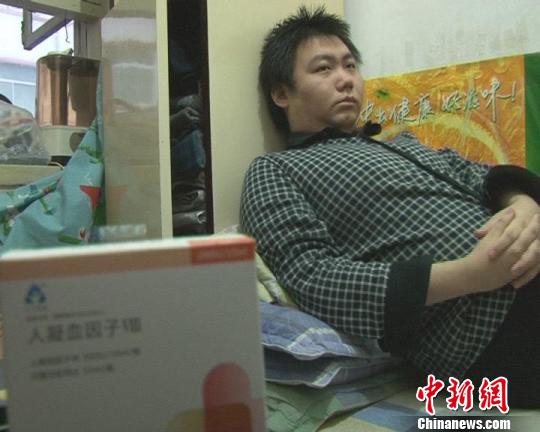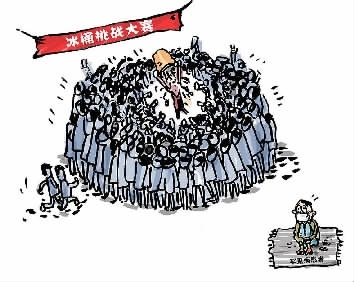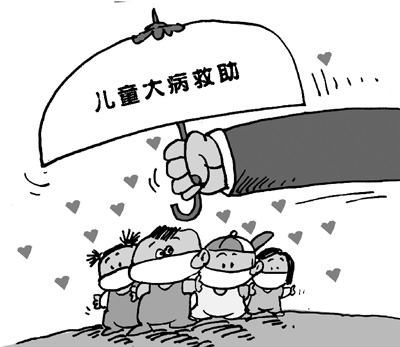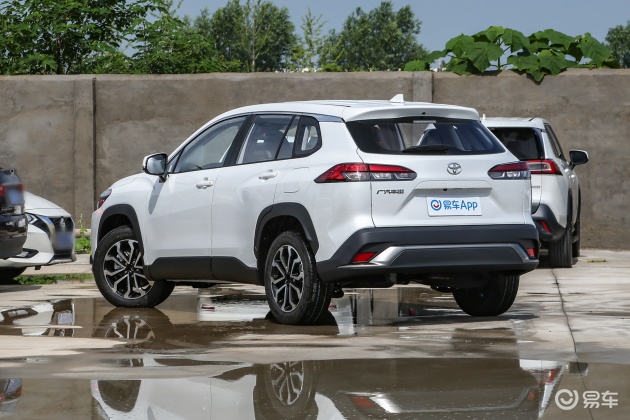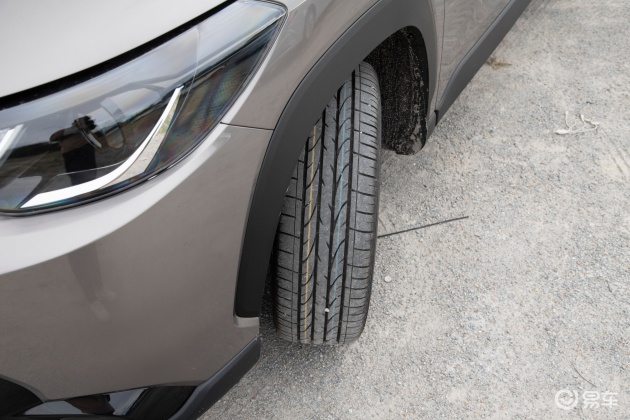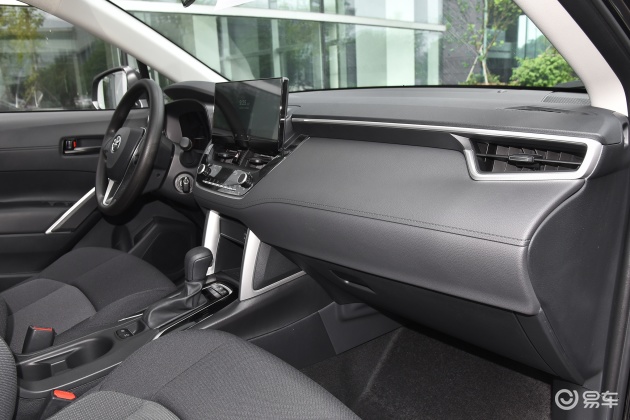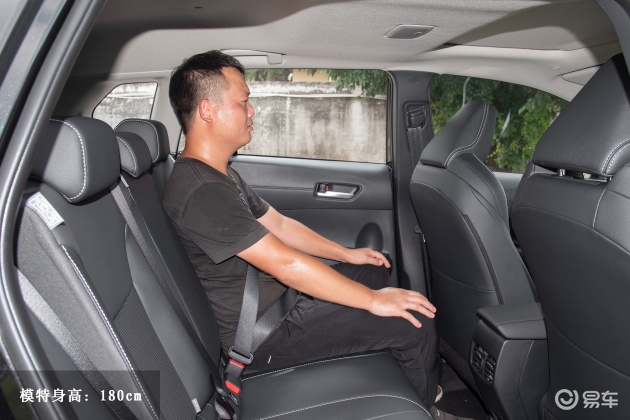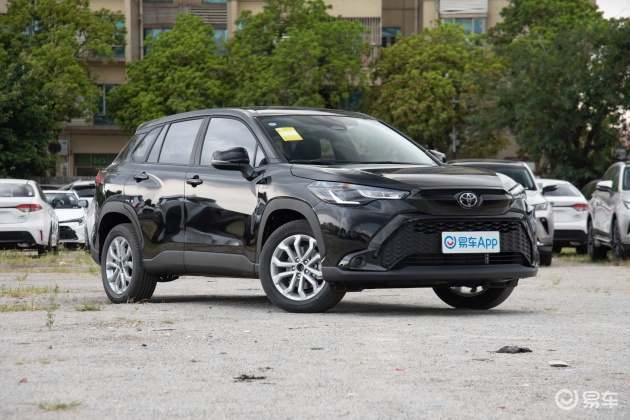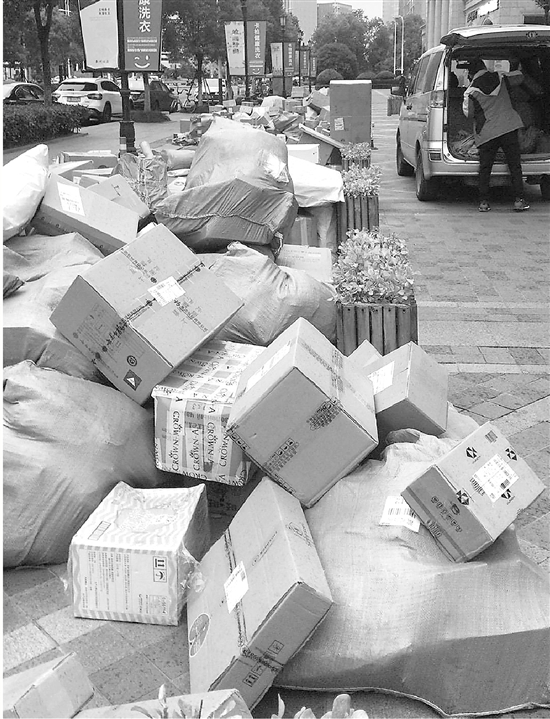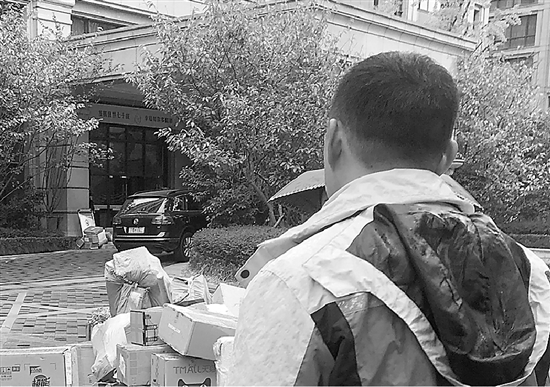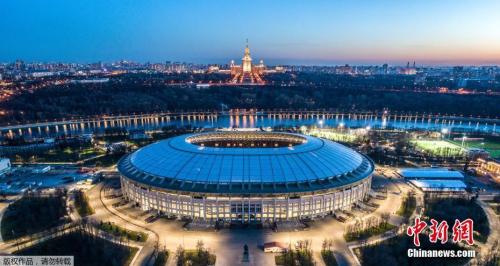
BEIJING, May 27th (Yu Wang) It is the dream of many fans to watch a World Cup match live. It’s less than a month since the opening of the 2018 World Cup in Russia. Are you still short of money and too busy to take a vacation? Then please remember the following 12 sentences and have a spiritual journey of "say and go".
The capital in the forest has both ancient solemnity and youthful vitality.
As the capital of the Russian Federation, Moscow can be said to be one of the cities with the most competitions in this World Cup. Moscow has a beautiful urban planning and is hidden in a green sea, so it has the reputation of "the capital of the forest". This ancient city is huge, complex and full of charm, with a history of more than 800 years. The solemn and ancient Red Square, the colorful St. Vasily Cathedral, and the Kremlin are complex, expensive, bright and lively.
In addition, there is the most magnificent subway in the world, Albat Street and charming night view, many historical sites and representative buildings with Soviet style, which makes the whole city feel grand and serious. Ancient solemnity and youthful vitality collide with brilliant sparks in this city.
On June 14th, Beijing time, the highly anticipated opening match of the World Cup in Russia will be held at Luzhniki Stadium in Moscow. As the center of the World Cup in Russia, there will also be three group matches, one quarter-final, one semi-final and the final. The other stadium, Spartak Stadium, will take on four group matches and one quarter-final.
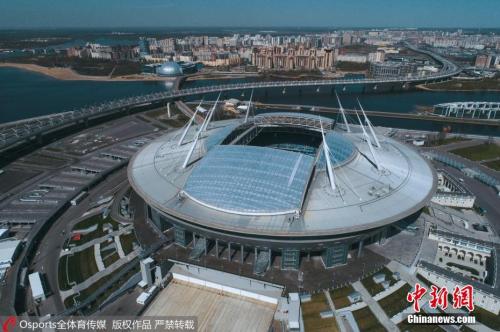
The design concept of St. Petersburg Stadium is to make the whole stadium look like a spaceship landing on the shore of the Gulf of Finland. Image source: Osports full sports photo agency
If you have never been to St. Petersburg, you have never really been to Russia.
As the saying goes: "If you have never been to St. Petersburg, you have never really been to Russia." As the second largest city in Russia, whether it is the Winter Palace, one of the four major museums in the world, the elegant and luxurious Summer Palace and Imperial Village, or the Kazan Cathedral, compared with Moscow, this city is undoubtedly more royal, more artistic and more suitable for free travel.
Strolling through this city, I feel the sea breeze of the Baltic Sea and the aristocratic atmosphere accumulated in the era of Peter the Great. We can find that this is a city that once carried the dream of revival. As the most European city in Russia, it is also praised by Pushkin as Russia’s "window to Europe".
In July 2017, the German team defeated Chile 1-0 at St. Petersburg Stadium and won the Confederations Cup. The stadium is equipped with a retractable roof, which can hold events at any time — — Even in winter, the temperature in the stadium will reach 15 degrees Celsius. During the World Cup, it will host four group matches, one quarter-final, one semi-final and the third place.
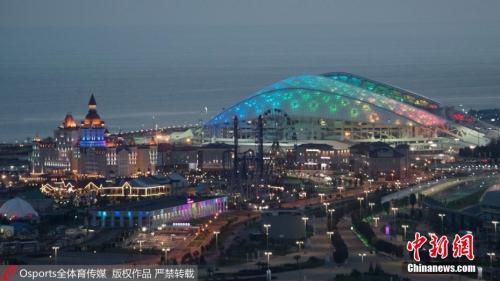
Fisht Olympic Stadium is located in the center of Sochi Olympic Park, next to Bolshoy Ice Palace, Riccardo Chailly Ba Ice Hockey Center, Ice Cube Curling Center, Iceberg Skating Center and Adele Arena, which are the coastal clusters of Olympic venues. Image source: Osports full sports photo agency
The venue of the 2014 Winter Olympics is known as the "Summer Capital" of Russia.
The next city should be no stranger to sports fans. It is the venue of the 2014 Winter Olympics — — Sochi. It is at the same latitude as Jilin City, Jilin Province, China, but the temperature is very different, and the lowest temperature in Sochi will not be lower than 5. Therefore, Sochi is also known as the summer capital of Russia, which shows that Sochi in summer is also very suitable for leisure and vacation.
Fister Stadium, located in the center of Sochi Olympic Park, is the main venue for the opening and closing ceremonies of 2014 sochi winter olympics. After renovation, it has been transformed into a World Cup venue. During the World Cup, Fister Stadium will host four group matches, one quarter-final and one quarter-final. On June 15th, Beijing time, the Group B match between Portugal and Spain will start here.
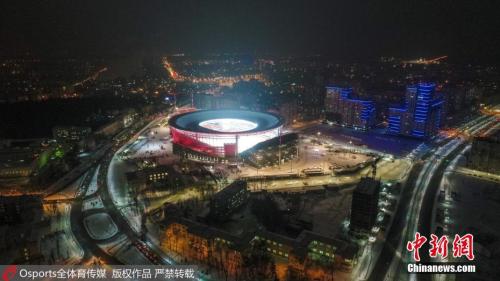
Among all Russian cities hosting the World Cup, Yekaterinburg is the easternmost one, with a distance of about 1,800km from Moscow and 2,300km from St Petersburg.
The city is named after the queen.
Yekaterinburg was founded in 1723, named after Queen Yekaterinina I. This is the center of science and education in Russia, with rich cultural heritage: it has the oldest university in the Urals; And that prestigious Ural philharmonic orchestra and Ural symphony orchestra are also resident here. Among all the cities hosting the World Cup in Russia, Yekaterinburg is the easternmost one.
The Yekaterinburg Arena, which was completed in 1953, was renovated and rebuilt to host the World Cup, but it retained the original distinctive neoclassical architectural style of the former Soviet Union. Interestingly, because the stadium could only accommodate 23,000 spectators, which was less than the minimum requirements of the World Cup venue, the designer removed both ends of the stadium and spliced together to build temporary stands that could carry more spectators. There will only be four group matches here.
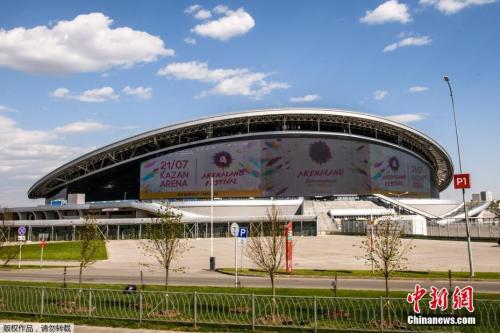
3A Certification Ning Zetao was once king here.
Kazan is located in the longest river in Europe — — The left bank of the middle reaches of the Volga River is a famous cultural city in central Russia. Together with Moscow and St. Petersburg, it is listed as three A-level historical and cultural cities in Russia. In 2015, the 16th FINA World Championships was also held here.
The famous Kazan Kremlin in the city was built on an ancient site older than that, and stood there quietly in a low-key and gorgeous way. In Kazan, there are European-style churches, Asian-style lamaseries and Arab mosques. Colorful, colorful and interesting.
Kazan Arena is a four-story stadium, which was built for the World University Games in 2013. At present, it is mainly used as a football venue. It is the home of Kazan Ruby Football Club and can accommodate 45,000 spectators. Because of the perfect supporting facilities, Kazan Arena itself is a commercial center and is in the center of the city, so Kazan Arena is also called "the city within the city". Four World Cup group matches, one quarter-final and one quarter-final will be held here.
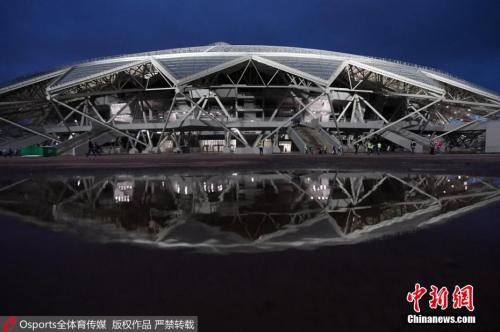
Samara Stadium was built on an island in the south of Samara. In the Volga region, the design of this modern stadium was inspired by the local developed aerospace industry. Image source: Osports full sports photo agency
Due to the rise of the war, Aeroflot built a "glass dome".
Samara, which is close to Kazakhstan, was an important trade center during the period of Peter the Great and was renamed kuibyshev. During the Great Patriotic War of the Soviet Union in 1941-1945, it was the core of the Soviet rear area, and some important factories and enterprises moved here, including some important aerospace enterprises, so Samara developed into an industrial center in Russia.
Samara Arena is one of the newly-built venues in this World Cup. The design of the venue was inspired by the developed local aviation industry. From the outside, Samara Arena is like a glass dome, which is spectacular under the illumination of night lights. Similarly, there will be four World Cup group matches, one quarter-final and one quarter-final here.

Moore Dauvia Arena is located within walking distance of the center of Saransk. This is a beautiful oval stadium with orange, red and white tiles as building materials, which reflects the artistic and handicraft features of Moore Dauvia and has a strong sense of design.
A "country" capital, the World Cup in a small town.
Saransk, the capital of the Republic of Moldova in the Russian Federation, belongs to the federal district of Volga. It is located on the Insar River, a tributary of the middle reaches of the Volga River, with an urban area of about 80 square kilometers and a population of about 310,000. It is an important electrical industry center and railway hub in Russia.
Moldovan Arena is a newly-built stadium for this World Cup. It is a beautiful oval stadium, with red and white tiles as building materials. In the local Moldovan culture, red represents life, while white represents national aura. During the World Cup, four group matches will be held in this stadium.
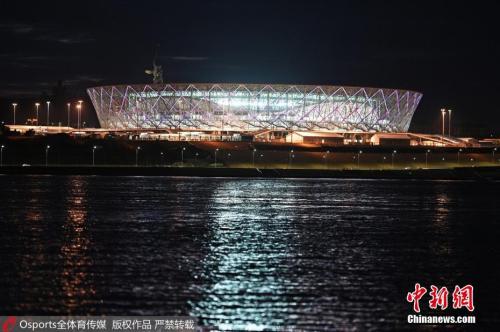
The Victory Stadium in Volgograd is located next to the giant statue of "Motherland Calling" in the famous Mamayev Highland on the Volga River. The official name of this stadium during the World Cup is Volgograd Arena.
Remember the "Battle of Stalingrad"?
Volgograd is located in the North Caucasus region of southwest Russia, on the banks of the Volga River, with beautiful scenery and rich products, and is called Russia’s "southern granary". In 1925, it was renamed Stalingrad to commemorate Stalin. The victory of Stalingrad in World War II became a major turning point in the anti-fascist war and laid the foundation for the victory of the Soviet Patriotic War and the whole World War II.
Volgograd, with a long history, can be described as "historic sites everywhere", and the most famous one is Mamayev Post — — The main battlefield in the battle of Stalingrad. During World War II, it was the central battlefield of Stalingrad’s defense war and the place where the Soviet Red Army and the German fascist army finally fought.
The Victory Stadium in Volgograd is located next to the giant statue of "Motherland Calling" in the famous Mamayev Highland on the Volga River. The official name of this stadium during the World Cup is Volgograd Arena. The exterior wall of the stadium adopts inverted truncated cone structure, and the open lattice shape enhances the firmness of the whole building. The special structure of the roof is reminiscent of spokes on bicycle wheels. In this unique stadium, four World Cup group matches will be witnessed.
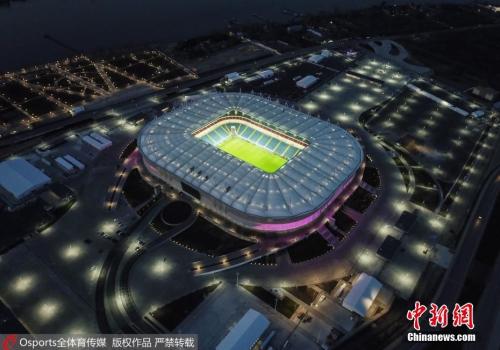
As the capital of Rostov oblast, Rostov-on-Don is located in the south of Moscow, which is more than 1000 kilometers away from Moscow. The Rostov-on-Don Stadium is built on the left bank of the Don River. The stands in the north are huge and wide, and the stands are strewn at random. The audience can see different views of Rostov-on-Don from their seats.
Watch the ball and enjoy the scenery. On the left bank of the Don River, there are not only Hehan, Beach and Weitang.
Rostov-on-Don, the capital of Rostov State, is located on the Don River in the southeast of Eastern Europe Plain, where the climate is pleasant and it is the hometown of famous novelists Anton Chekov and Aleksandr Solzhenitsyn. In The Quiet Don by sholokhov, the Nobel Prize winner, he vividly described the joys and sorrows of the Cossack war here, and thus won the Nobel Prize in Literature.
The original design of the Rostov Arena incorporates picturesque scenery. The shape of the arena roof imitates the twists and turns of the Don River. The different heights in the stands allow the audience to enjoy not only what is happening on the court, but also the beautiful scenery of the Rostovton River. Four group matches, including Brazil against Switzerland, will be held here.
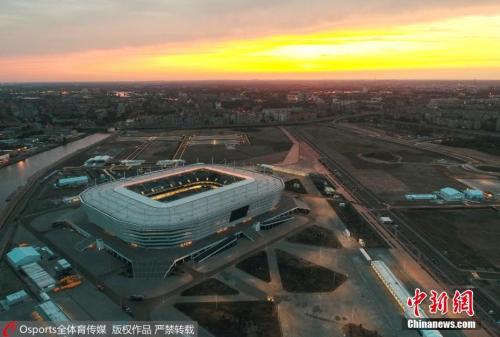
Because Kaliningrad is located between Poland and Lithuania, Kaliningrad Stadium is the only World Cup venue outside the main territory of Russia. Image source: Osports full sports photo agency
Why was it criticized by Putin here?
Kaliningrad has a long history. As early as the 13th century, the Teutonic Order built its city here. Later, it became the capital of East Prussia, Germany, formerly known as Konigsberg, and was the hometown of Goldbach and Kant. After World War II, it was divided into Soviet Union, and this land was named after Mikhail Kalinin, the leader of the Soviet Union who just died at that time.
Kaliningrad Stadium was the latest of all the newly-built venues in the World Cup, and the foundation stone was not laid until the autumn of 2015, which was also criticized by Russian President Vladimir Putin. However, the stadium rose in just two years and was basically completed by the end of 2017. There will be a strong dialogue between England and Belgium in the upcoming four World Cup group matches here.
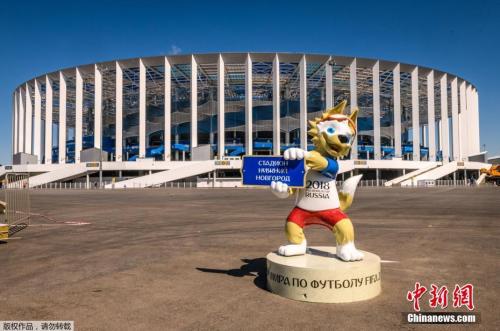
Nizhny Novgorod is located between Moscow and Kazan, at the intersection of Volga River and Oka River. It is said that the design of the venue was inspired by the local natural scenery — — Water and wind.
"come on Let the storm come more violently! "
At the confluence of Volga River and its tributary Oka River, about 400 kilometers west of Moscow, lies an important economic, industrial and cultural center of Russia — — Nizhny Novgorod. This is the hometown of Gorky, a famous writer. As one of the most dynamic capital cities in Russia, if you love food and entertainment, you must not miss it here.
Nizhny Novgorod Stadium is a newly-built stadium for this World Cup, built on the Bechel Besky Peninsula on the bank of the gleb Canal. It is said that the design of the venue was inspired by the local natural scenery — — Water and wind, the exterior decoration adopts blue and white as the main color. One of the few "strong dialogues" in the group stage of this World Cup — — Argentina against Croatia will be staged here. In addition, there will be a quarter-final and an eighth-final.
If you read the above introduction, you can’t help but feel like leaving. It doesn’t matter. Russian visitors can enter and leave China without a visa with the entity or electronic audience card (fan passport) that records their personal information, and the ticket or the certificate of obtaining the ticket. Watching a World Cup match on the spot is no longer a dream.
However, it should be noted that, according to the regulations, the entry period for foreign tourists is 10 days before the first match of the World Cup, and the exit period is 10 days after the last match. Those who enter the country by car must enter the country from the Russian border port open to international passengers. The World Cup in Russia was whistled on June 14th this year, and the final was held on July 15th. (End)



